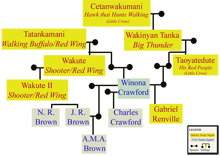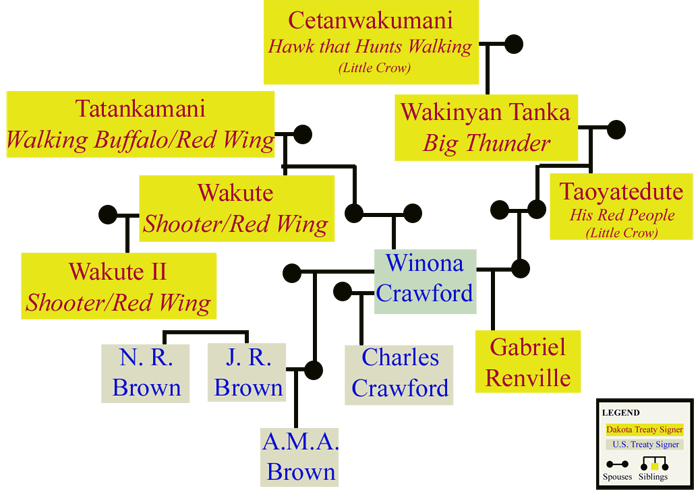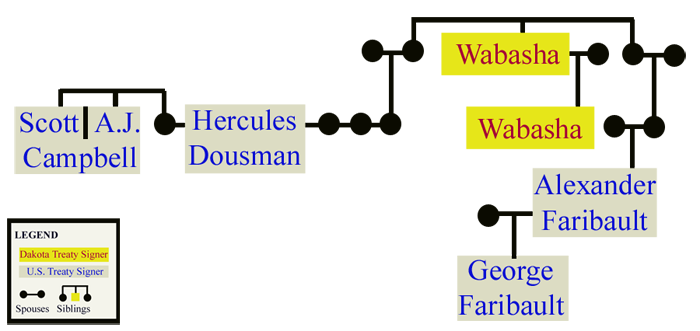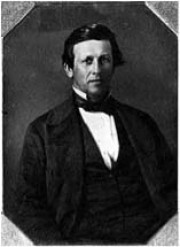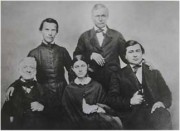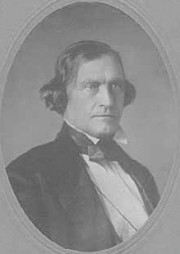A Dakota Trading Kinship Group
At the beginning of the treaty-making era, Dakota people controlled the fur trade in much of the "Upper Midwest." Many prominent early Minnesotans married into Dakota families to gain access to trading networks.
The charts presented here show some of the many family connections that affected U.S.-Indian relations. The group includes Cetanwakumani (Hawk That Hunts Walking), who signed the first Dakota-U.S. treaty in 1805. Cetanwakumani was known as Petit Corbeau, (Little Crow), a name that was passed down to his son Wakinyantanka (Big Thunder), and to his grandson Tayoyateduta (His Red People), who played a prominent role in the Dakota War of 1862. Other members of this kinship group include the men who carried the names of Wabasha and Red Wing for generations.
Dakota members of this kinship group were present at every Dakota treaty, including the last treaty far to the west at Fort Laramie in 1868. In addition to noted Dakota leaders, the extended family included important U.S. land speculators and fur traders such as Joseph Renshaw Brown and Hercules Dousman. The family also included mixed-blood individuals who identified themselves with a wide variety of cultural labels.
The family connections among this group profoundly affected trade, land cessions, and the whole of U.S.-Dakota relations throughout the treaty making period. Not surprisingly, this family group’s presence is most notable at the 1825 Treaty of Prairie du Chien where the Dakota people agreed to set territorial boundaries for the first time; and at the 1851 treaties at which Dakota people ceded 16,000,000 acres to the U.S., in exchange for payments that were diverted to a large extent to their white relatives.
The fluidity of these relationships can be seen in the situation of Winona Crawford, granddaughter of Red Wing and daughter of a British fur trader. She married three men: a full-blood Dakota man named Akipa (or Joseph Renville); a mixed-blood nephew of Little Crow named Ohiya (or Victor Renville); and a French-Sisseton fur trader named Narcis Frenier. Two of her children signed the 1867 treaty that established the Sisseton reservation: Charles Crawford, an interpreter who signed on behalf of the U.S.; and Gabriel Renville, who led the Dakota treaty delegation.
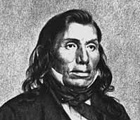
Little Crow
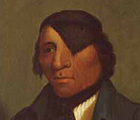
Wabasha
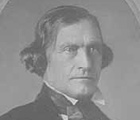
Joseph Renshaw Brown

